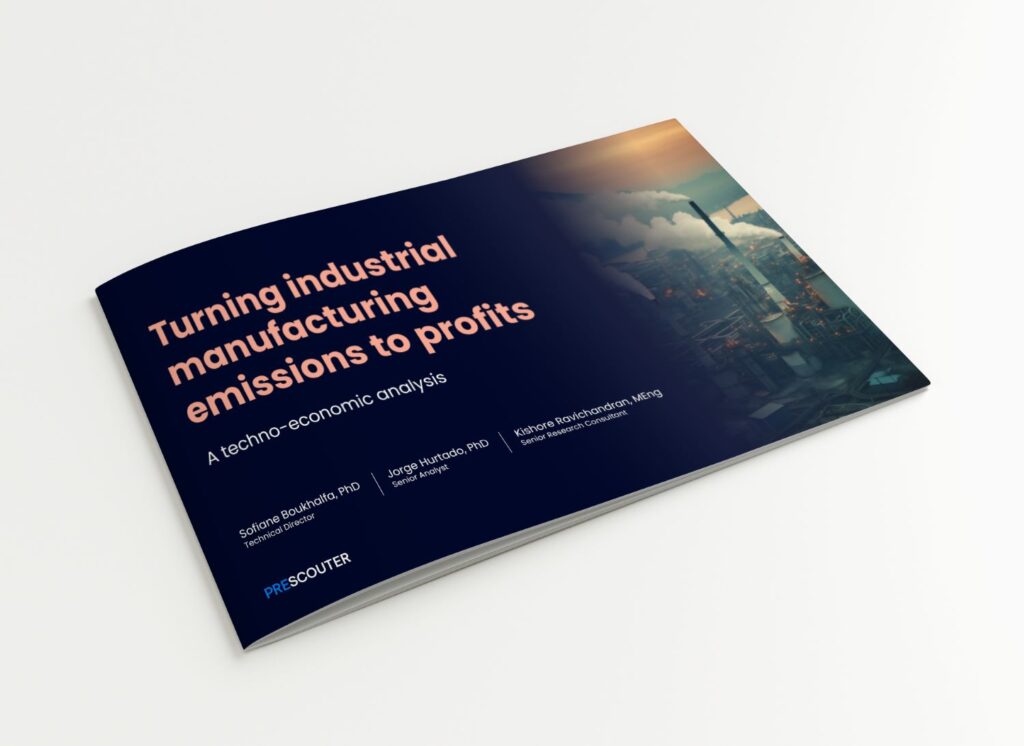Industrial manufacturing drives global economies, yet its environmental footprint remains substantial. It accounts for 20% of global carbon emissions and consumes more than half of the world’s energy. However, a promising path exists to convert these emissions into profitable products.
Why is manufacturing a major source of carbon emissions?
Manufacturing industries such as steel, cement, and chemicals require large amounts of energy to operate. Fossil fuels are often burned to generate the heat and power needed for these processes. This reliance on carbon-based fuels directly contributes to the release of greenhouse gases.
CO2 emissions as a byproduct
Certain manufacturing processes release carbon dioxide as a byproduct, such as:
- Cement production produces CO2 during the limestone calcination process to produce lime.
- Steel production involves using coke in blast furnaces, releasing CO2 in iron conversion processes.
- Aluminum production emits CO2 due to the consumption of carbon anodes during electrolysis.
High dependency on electricity
Manufacturing relies heavily on electricity, which often comes from carbon-intensive sources like coal. The indirect emissions from electricity production add to the direct emissions from fossil fuel combustion. Together, they make industrial manufacturing one of the largest greenhouse gas contributors.
Impact of supply chain logistics
Transporting raw materials and finished goods consumes fuel, which adds to the overall emissions. Complex global supply chains mean emissions accumulate at various stages of production and distribution. As a result, supply chains amplify the environmental impact of industrial manufacturing.
Converting manufacturing emissions into profitable products:
Here, we discuss key carbon conversion methods that can turn emissions from industrial manufacturing into value-added and profitable products.
Pyrolysis
Pyrolysis transforms carbon emissions by heating biomass in the absence of oxygen, producing biochar. Below are some profitable uses of biochar:
- Biochar improves soil health by enhancing water retention, nutrient availability, and crop yield.
- It helps businesses achieve carbon credits, contributing to the growing carbon offset market.
- Biochar production converts waste materials into valuable resources, supporting a circular economy.
Hydrothermal conversion
Hydrothermal conversion uses water at high temperatures and pressures to process biomass and carbon dioxide into hydrochar. Hydrochar is a value-added product since:
- It is used in energy production and offers a renewable alternative to traditional fuels. This reduces dependency on non-renewable energy sources, increasing profit margins.
- In agriculture, hydrochar improves soil quality and enhances crop yield.
- Hydrochar helps to filter pollutants in wastewater.
Adsorption
Adsorption captures CO2 from emissions, concentrating it to produce methanol, methane, and dimethyl ether (DME). These products have important use cases, including:
- Methanol is used as a fuel additive and offers a cleaner option for internal combustion engines.
- Methane is a primary component of natural gas, which is used for energy generation.
- DME’s role as a propellant in aerosols is crucial for both personal care and industrial products.
Access our full report to uncover:
- In-depth insights into various carbon conversion methods
- A comprehensive cost analysis of these solutions
- The most profitable option for the industrial manufacturing sector
How can PreScouter help?
PreScouter can help organizations turn carbon emissions into profit through strategic insights and recommendations. Here is how we can help:
- Tailored research: Offer research aligned with industrial manufacturing sector needs, focusing on sustainability and carbon capture solutions.
- Technology profiling: Provide detailed profiles of technologies that can help convert emissions into valuable and marketable products.
- Profit evaluation: Help businesses evaluate profitability from different carbon conversion methods, assisting them to opt for the most viable option.
- Market insights: Analyze market dynamics, including competition and growth potential, for products derived from carbon emissions.
- Partnership and collaboration: Identify potential industry partners to expedite the adoption and commercialization of carbon conversion technologies.
- Regulatory assistance: Guide companies through the regulatory landscape, ensuring compliance while maximizing profits from sustainable manufacturing practices.








